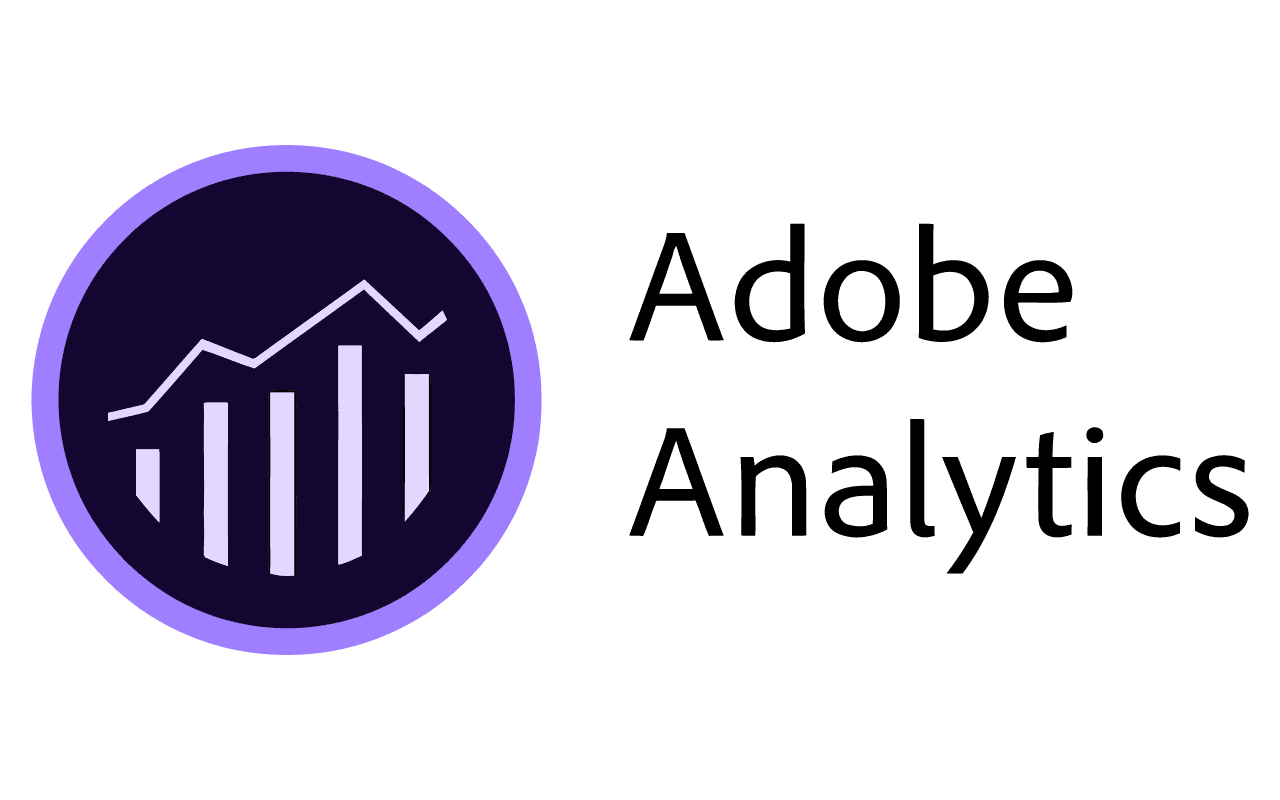Choosing the right marketing analytics tool can feel like navigating a maze without a map. With so many intricate paths and turns, each promising to lead you to the treasure trove of data-driven insights, it’s easy to feel lost. Enter the giants: Adobe Analytics and Optimizely. These platforms have been at the forefront of the analytics revolution, offering powerful tools to decipher the language of data. But which one is the right guide for your journey? Let’s dive deep into the heart of these analytics behemoths to uncover which tool might be the best companion for your marketing adventures.
| Adobe Analytics | Optimizely |
|---|---|
 |  |
| G2 Score – 4.1 out of 5 stars | G2 Score – 4.5 out of 5 stars |
| TrustRadius Score – 8.2 out of 10 | TrustRadius Score – 8.7 out of 10 |
A Deep Dive into User Experience and Interface
When it comes to choosing a marketing analytics tool, the user experience (UX) and interface can be the make or break factor. After all, what’s the use of powerful analytics if navigating through the tool feels like deciphering an ancient script? Let’s start our comparison with a look at how Adobe Analytics and Optimizely stack up in terms of UX and interface.
Adobe Analytics: A Comprehensive, Yet Complex Landscape
Adobe Analytics is often hailed as the Swiss Army knife of digital analytics tools. Its comprehensive suite offers deep insights into web and mobile analytics, audience segmentation, and real-time data processing. However, with great power comes great complexity. New users might find Adobe Analytics’ interface a bit daunting. The platform is robust, featuring a multitude of menus, submenus, and customizable dashboards. While this allows for a highly tailored analytics experience, it can also steepen the learning curve for beginners.
Adobe’s strength lies in its ability to provide granular data analysis. For users who are willing to climb the learning curve, the platform offers unparalleled insights. You can track virtually every aspect of your digital presence, from user clicks to path analysis, and even predictive modeling. But, to truly harness the power of Adobe Analytics, a solid understanding of analytics and possibly some training is required.
Optimizely: Streamlining the Path to Insights
On the other hand, Optimizely shines in its user-friendly approach. Initially famous for its A/B testing capabilities, Optimizely has evolved into a comprehensive experimentation platform that includes marketing analytics. Its interface is intuitive, making it easier for newcomers to navigate. The platform is designed with a clear focus on enabling users to set up experiments and understand their results without getting bogged down in complexity.
Optimizely’s dashboard is clean and approachable, with a clear emphasis on actionable insights. It guides users through the process of creating and managing experiments, from hypothesis to conclusion. The platform also does an excellent job of presenting data in an easily digestible format, which is perfect for marketing teams looking to quickly make informed decisions based on their analytics.
The Verdict on UX and Interface
If your journey through the maze of data is just beginning, or if you prefer a tool that gets you to insights with minimal fuss, Optimizely might be the guide for you. Its user-friendly interface and streamlined approach to data analysis can help you quickly make sense of your marketing efforts. However, for those who crave depth and detail in their data exploration, Adobe Analytics offers a rich landscape brimming with insights. It’s a tool designed for data aficionados who aren’t afraid to dive deep into analytics.
Delving into Integration Capabilities
In today’s digital ecosystem, a marketing analytics tool’s value is significantly amplified by its ability to integrate with other software. Whether it’s your CRM, email marketing platform, or advertising networks, seamless integration ensures that all your data streams flow into a central repository for holistic analysis. Let’s compare how Adobe Analytics and Optimizely fare when it comes to playing well with others.
Adobe Analytics: The Hub of the Digital Marketing Wheel
Adobe Analytics is part of the Adobe Experience Cloud, a suite designed to cover all your digital marketing needs, from analytics to content management and advertising. This ecosystem advantage means that Adobe Analytics offers native integrations with other Adobe products, such as Adobe Experience Manager and Adobe Campaign, providing a seamless flow of data across platforms.
But Adobe doesn’t stop at its own backyard. It also offers robust APIs and integrations with third-party platforms. This allows businesses to connect Adobe Analytics with a wide array of digital tools, from social media platforms to CRM systems. The platform’s flexibility ensures that it can become the central hub for all your marketing data, offering a 360-degree view of your customer journey.
However, the sophistication of Adobe’s integrations can sometimes be a double-edged sword. Setting up and managing these integrations often requires technical know-how, which might necessitate additional support from IT specialists or Adobe consultants. This can be a consideration for smaller teams or those with limited technical resources.
Optimizely: Simplifying Connections
Optimizely’s approach to integration focuses on simplicity and effectiveness. With a robust set of APIs and out-of-the-box integrations with popular marketing tools, Optimizely makes it easy to connect your data sources. The platform excels in enabling quick setup of experiments across your digital properties, whether that’s your website, mobile app, or connected devices.
One of Optimizely’s standout features is its emphasis on experimentation and personalization, which extends to its integration capabilities. For example, it offers seamless connections with content management systems (CMS) and e-commerce platforms, allowing you to easily test and personalize user experiences based on data from those systems.
While Optimizely might not offer the same depth of integration as Adobe Analytics, it covers the essentials with less complexity, making it a good fit for teams looking for straightforward integration with their existing tools without the need for extensive technical intervention.
Weighing Integration Capabilities
When it comes to integration capabilities, your choice between Adobe Analytics and Optimizely might come down to the scale and complexity of your digital ecosystem. Adobe Analytics is the heavyweight champion for large enterprises or businesses deeply embedded in the Adobe ecosystem, offering unmatched depth and breadth of integration.
Optimizely, with its focus on ease of use and quick setup, is particularly suited for businesses that prioritize agility and simplicity in their integration needs. Its streamlined approach ensures that teams can quickly connect their tools and focus on leveraging insights for experimentation and optimization.
Analyzing Cost Efficiency and ROI
Investing in a marketing analytics tool is not just about purchasing software; it’s about investing in a platform that will drive your marketing efforts to new heights. However, the cost is a crucial factor for most businesses, from startups to large enterprises. Let’s examine how Adobe Analytics and Optimizely stack up in terms of cost efficiency and the potential return on investment (ROI) they offer.
| Adobe Analytics | Adobe Analytics does not publicly disclose its pricing, as it tailors costs to each customer’s specific needs. However, it’s suggested that prices can range from $48,000 to $350,000 per year. |
| Optimizely | Optimizely does not publicly list detailed pricing for its services, including experimentation and personalization products. Interested parties must contact them directly for a custom quote. |
Adobe Analytics: Premium Insights at a Premium Price
Adobe Analytics is known for its comprehensive and deep analytical capabilities, which come with a price tag to match. Aimed primarily at medium to large businesses and enterprises, the cost of Adobe Analytics can be significant, especially when considering the full suite of features and potential add-ons. The platform operates on a custom pricing model, which means the cost is tailored to each organization’s specific needs, including the volume of data processed and the range of features required.
While the initial investment might seem high, it’s important to consider the value Adobe Analytics brings to the table. For organizations with complex digital ecosystems and a need for deep, granular insights, Adobe Analytics can be a game-changer. The ability to uncover detailed user behaviors, predict trends, and integrate seamlessly with other digital tools can lead to significant improvements in marketing strategies and customer experiences, driving up ROI over time.
Moreover, businesses that are already invested in the Adobe ecosystem may find additional value in the seamless integration Adobe Analytics offers with other Adobe products, potentially enhancing efficiency and data coherence across platforms.
Optimizely: Maximizing Value Through Experimentation
Optimizely, on the other hand, positions itself as a more accessible option for businesses of all sizes. Its pricing structure is more transparent, with plans ranging from basic offerings suitable for small teams to more advanced options designed for larger organizations with complex experimentation needs. This flexibility allows businesses to choose a plan that matches their budget and scale up as necessary.
The core value proposition of Optimizely lies in its ability to rapidly test, learn, and optimize digital experiences. This focus on experimentation and optimization can lead to direct improvements in conversion rates, customer engagement, and overall marketing performance. For many businesses, the ability to make data-driven decisions quickly and to iterate on digital experiences offers a clear path to a strong ROI.
Optimizely’s cost efficiency becomes even more apparent for companies that prioritize agility and the ability to adapt quickly to changing market conditions. By enabling marketers and product teams to experiment freely and often, Optimizely can help businesses stay ahead of the curve, making it a potentially invaluable tool in the marketer’s toolkit.
Balancing Cost and Value
In comparing the cost efficiency and ROI of Adobe Analytics and Optimizely, it’s essential to consider your organization’s specific needs and how each platform aligns with those needs. Adobe Analytics offers a depth of insight that can be critical for large organizations or those with intricate digital marketing strategies, justifying its higher cost for businesses that can leverage its full power.
Conversely, Optimizely’s strength lies in enabling businesses to quickly iterate and optimize their digital experiences, offering a more straightforward path to ROI, especially for those with a strong focus on experimentation and rapid improvement.
Ultimately, the choice between Adobe Analytics and Optimizely should be informed by a clear understanding of your marketing goals, the complexity of your digital ecosystem, and your budget. Both platforms offer significant value, but the best choice for your organization will depend on which platform’s strengths align most closely with your needs.

Related: Check out our free SEO suite

Diving into Analytics and Reporting Capabilities
The heart of any marketing analytics tool lies in its ability to turn raw data into actionable insights. Analytics and reporting capabilities are where the rubber meets the road, determining whether a platform can truly deliver on the promise of data-driven decision-making. Let’s see how Adobe Analytics and Optimizely measure up in this critical arena.
Adobe Analytics: Deep Dives into Data
Adobe Analytics is renowned for its comprehensive and advanced analytics capabilities. It offers a wide range of features that cater to deep data analysis, including custom segmentation, cohort analysis, and multichannel data collection. Adobe’s powerful processing engine allows users to sift through massive datasets to uncover trends, patterns, and anomalies.
One of the standout features of Adobe Analytics is its ability to provide real-time analytics and data visualization. This enables businesses to respond swiftly to changing customer behaviors and market conditions. Furthermore, Adobe’s Analysis Workspace offers a flexible, drag-and-drop interface that allows users to create customized reports and dashboards tailored to their specific needs.
The platform also excels in predictive analytics, leveraging machine learning and AI to forecast future trends and customer actions. This can be a game-changer for businesses looking to stay ahead of the curve.
However, the complexity that comes with such a rich feature set can be daunting for some users. Maximizing the value from Adobe Analytics often requires a dedicated team of data analysts or extensive training.
Optimizely: Focused Insights for Experimentation
Optimizely, while not as comprehensive in its analytics offerings as Adobe Analytics, focuses on providing actionable insights specifically geared towards experimentation and optimization. Its strength lies in its ability to simplify the analysis of A/B tests and multivariate experiments, making it easier for marketing teams to understand what works and why.
The platform provides clear, easy-to-interpret reports that highlight key metrics and results from experiments. This focus on actionable insights allows teams to make quick, informed decisions about their marketing strategies and website optimizations.
Optimizely also offers features for audience targeting and segmentation, enabling businesses to tailor their experiments and analyze how different groups of users react to changes. While these features are not as extensive as Adobe’s, they are more accessible to users without deep technical expertise.
Comparison of Analytics and Reporting
When it comes to analytics and reporting, the choice between Adobe Analytics and Optimizely can largely be influenced by the depth of analysis your business requires and the resources you have at your disposal.
Adobe Analytics is the powerhouse for businesses that need to dive deep into data, offering a level of granularity and predictive capabilities that can provide a competitive edge. It’s particularly suited for larger organizations or those with dedicated analytics teams who can harness the full potential of the platform.
Optimizely, on the other hand, is ideal for businesses that value speed and simplicity in their analytics. Its straightforward reporting and focused approach to experimentation analytics make it a strong choice for marketing teams looking to quickly iterate on their digital experiences without getting lost in data.
In conclusion, both Adobe Analytics and Optimizely offer powerful tools for data-driven decision-making. Your choice should be guided by your specific needs, whether it’s the depth and breadth of data analysis with Adobe or the streamlined, experiment-focused insights provided by Optimizely.
Exploring Customer Support and Community
Even the most intuitive tools can present challenges or questions that need addressing. This is where customer support and community involvement become crucial. A strong support system can significantly enhance the user experience, ensuring that any hurdles in the analytics journey are quickly overcome. Let’s compare the customer support services and community engagement of Adobe Analytics and Optimizely.
Adobe Analytics: Comprehensive Support with a Learning Curve
Adobe Analytics, given its complexity and depth, offers a wide array of support options designed to cater to its diverse user base. Customers have access to Adobe’s extensive knowledge base, technical support teams, and professional services. Adobe also offers training through the Adobe Experience League, a comprehensive learning platform that includes tutorials, courses, and community forums where users can exchange tips and insights.
One of the key advantages of Adobe Analytics is the breadth of its community. Being part of the larger Adobe ecosystem, users can benefit from a wide network of experts and peers across various Adobe products. This community is an invaluable resource for solving complex challenges and discovering best practices.
However, the level of support can vary depending on the subscription plan, with more personalized support options, such as dedicated account managers, available to enterprise-level customers. Smaller teams or individual users might find navigating Adobe’s support structure and leveraging the full extent of available resources a bit daunting without the investment in higher-tier plans.
Optimizely: User-Friendly Support for Rapid Resolution
Optimizely’s approach to customer support and community engagement is designed to be as user-friendly as its platform. It offers a comprehensive help center with articles, tutorials, and guides that are easily accessible to all users. Optimizely also provides direct support through email, chat, and phone, ensuring that users can get help in the way that suits them best.
The Optimizely community is vibrant and engaged, with an active forum where users can ask questions, share experiences, and offer advice. This peer-to-peer support is complemented by Optimizely’s Academy, which provides training and certification programs to help users get the most out of their experimentation efforts.
What sets Optimizely apart in terms of support is its focus on rapid resolution and accessibility. The support team is known for being responsive and helpful, making it easier for businesses to address issues quickly and keep their experiments running smoothly.
Evaluating Customer Support and Community
In the realm of customer support and community, both Adobe Analytics and Optimizely excel, but in ways that reflect their platform philosophies. Adobe offers a deep and comprehensive support network that caters well to large enterprises and users deeply entrenched in the Adobe ecosystem. Its extensive resources and community can be incredibly valuable, albeit potentially overwhelming for smaller teams or those new to the platform.
Optimizely, in contrast, shines in its ability to provide straightforward, accessible support, making it an excellent choice for teams that prioritize ease of use and rapid issue resolution. Its community is active and welcoming, offering a supportive environment for both novice and experienced experimenters.
The decision between Adobe Analytics and Optimizely in terms of customer support and community will depend on your organization’s size, resources, and how much value you place on direct, easy-to-access support versus a comprehensive, ecosystem-wide network of resources and experts.
This comparison highlights just a few key areas to consider when choosing between Adobe Analytics and Optimizely. Each platform offers unique strengths and could be the best fit depending on your specific needs, technical capabilities, and strategic goals.
Examining Deliverability and Performance
In the fast-paced world of digital marketing, the speed and reliability with which a marketing analytics tool can deliver insights and implement changes is crucial. This aspect of deliverability and performance encompasses not just the processing speed of the analytics engine, but also how quickly and effectively you can apply the insights to improve user experience and marketing strategies. Let’s delve into how Adobe Analytics and Optimizely stack up in terms of deliverability and performance.
Adobe Analytics: Robust, Yet Resource-Intensive
Adobe Analytics is known for its robust data processing capabilities, capable of handling vast amounts of data from multiple sources. This power allows it to deliver deep insights into customer behavior, marketing effectiveness, and more. Adobe’s infrastructure is designed to support large enterprises with high volumes of data and complex analytics needs, ensuring that performance does not degrade even under heavy loads.
However, the comprehensive nature of Adobe Analytics means that it can be resource-intensive. Implementing changes based on insights often requires a detailed understanding of the platform and, in some cases, custom development work. This can lead to longer lead times from insight to action, especially for organizations without dedicated Adobe Analytics experts on hand.
Additionally, while Adobe Analytics excels in data processing speed, the complexity of its interface can sometimes slow down the process of generating reports and extracting actionable insights. This is an important consideration for teams that need to move quickly and may not have the resources for extensive training or customization.
Optimizely: Agile and Action-Oriented
Optimizely, with its origins in A/B testing and optimization, places a strong emphasis on agility and speed. The platform is designed to quickly turn insights into action, enabling marketers to easily implement changes and measure their impact. This agility is a core aspect of Optimizely’s deliverability and performance, making it an attractive option for teams that need to iterate rapidly.
The platform’s user-friendly interface and straightforward reporting tools mean that insights are not only easy to derive but also to act upon. Optimizely allows marketers to directly apply findings from their experiments and analytics to optimize user experiences without the need for extensive technical support.
Moreover, Optimizely’s performance is optimized for real-time experimentation and feedback, ensuring that changes can be deployed and tested quickly. This can be a significant advantage in dynamic market conditions where being able to adapt swiftly can make a big difference in outcomes.
Weighing Deliverability and Performance
In terms of deliverability and performance, the choice between Adobe Analytics and Optimizely reflects a trade-off between depth and agility. Adobe Analytics offers a powerhouse of analytics capabilities designed for deep, comprehensive insights, but it may require more resources and time to translate these insights into action. Its performance is suited for organizations that deal with large datasets and complex analytics requirements but can be overkill for teams that need to move quickly and leanly.
Optimizely, on the other hand, shines in its ability to deliver insights and enable actions with speed and simplicity. It is particularly well-suited for organizations that prioritize rapid testing and iteration, offering a performance edge in environments where speed to market and agility are critical.
Ultimately, the decision between these two platforms will hinge on your organization’s specific needs, the complexity of your data, and how quickly you need to be able to act on the insights you gather. Whether you value the depth and robustness of Adobe Analytics or the agility and action-orientation of Optimizely, both platforms offer compelling benefits in the realm of deliverability and performance.
Conclusion
In conclusion, choosing between Adobe Analytics and Optimizely hinges on your business’s specific needs, resources, and strategic objectives. Adobe Analytics offers a robust, enterprise-grade solution designed for deep data analysis across multiple channels, ideal for larger organizations that require granular insights to inform complex decision-making processes. Its comprehensive feature set and predictive analytics capabilities come with a premium price tag but promise significant ROI for businesses equipped to leverage its full potential.
On the other hand, Optimizely provides a more accessible, user-friendly platform focused on experimentation and optimization, suitable for businesses of all sizes looking to quickly iterate and enhance their digital experiences. Its cost-effectiveness and scalability make it a compelling choice for those prioritizing rapid testing and immediate improvements in conversion rates and customer engagement. Ultimately, the best marketing analytics tool for you depends on balancing the depth of insights needed against the investment in time, expertise, and money your business is prepared to make.
Read Next:
- Startup SEO ROI Tracking: Metrics to Measure Business Growth
- Balancing SEO and Paid Advertising Budgets for Startup Success
- Startup SEO Budgeting for E-commerce: Conversion Rate Optimization
- Startup SEO Budgeting for E-commerce: Conversion Rate Optimization
- 31+ Top Social Media Management tools Compared! (2023)





















Comments are closed.